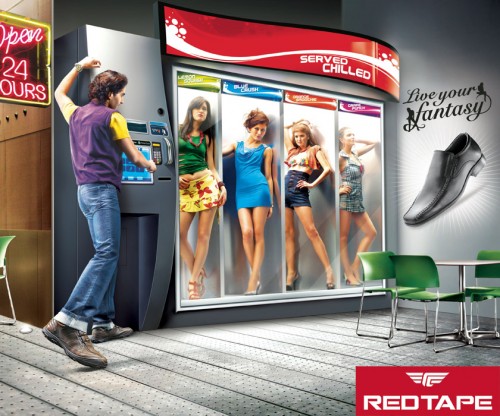c:museumofuncutfunk
The gaze. The way we view the world. The power to tell
stories and show images from our own perspective. It’s the idea that those
whose gaze holds the most power, can shape the dominant and leading reality of
the day, particularly through mass media. While today those of women and people
of color now have some of their voices heard, they still are far off from
holding the actual microphone. To this day they are still fighting against the
dominant white power structure in order to be allowed the space to tell their
stories.
"Not only will I stare. I want my look to change reality." (Hooks 116).
The “oppositional gaze” specifically deals with combating
the oppression of the black gaze and white supremacy. As Bell Hooks tells
it, “…mass media was a system of knowledge and power reproducing and
maintaining white supremacy” (Hooks 117). Black people were rarely given any
space in media and when they did appear, it was in stereotypical and
dehumanizing ways. Animalistic and violent when used as scapegoats, unintelligent
and simple when mocked and degraded, or as desexualized black women.
c: thesocietypages
For centuries it has been the gaze of white straight men that rose above the rest, the one voice that held all control. It is, after all, the inevitable reality of a patriarchal society. As a result, women have had their place in films, television, and other media outlets designed in a way that caters to the male gaze.
A popular and seemingly never ending portrayal of women in media is that of the sexualized eye candy. She is there simply to be objectified, often times the camera seemingly encouraging the viewer to do so. As Laura Mulvey points out, "By means of identification with him, through participating in his power, the spectator can directly possess her too." (Mulvey 840). She is merely a prop for the male hero, her importance only defined by her looks. Not once does she take the power of the narrative away from the men, not once does she even share it with him. Her very existence is only in relation to him. As John Berger reiterates in Ways of Seeing, "...the ideal spectactor is always assumed to be male" and as such "the image of the woman is designed to flatter him." (64). Her sexuality is portrayed as a way to highlight his desirability as a man. The woman never gets to be her own person apart from the male. She is always just an extension of him in her portrayal.
Media is a powerful influential figure in our society. Whether we're aware of it or not, it shapes the way we view ourselves and the way we view others. Thus is it important to the patriarchy to portray women and people of color in subservient roles. To never make their perspective equal to or greater than that of the white straight man. That is if and when their perspective is ever shared at all.
Works Cited
Bell Hooks. In Black Looks: Race and Representation. Boston: South End Press, 1992: 115-131.
Berger, John. Chapters 2,3. Ways of Seeing. London: British Broadcasting, 1972.
Mulvey, Laura. 'Visual Pleasure and Narrative Cinema'. Film Theory and Criticism: Introductory
Readings. NY: Oxford UP, 1999: 833-844.






Hi Jennifer,
ReplyDeleteThank you for sharing! I enjoyed your post and your discussion on the male gaze and the oppositional gaze. I agree that the male gaze is inherent in a patriarchal society. As a result, it is incredibly difficult for females, people of colors to be seen outside of the roles that are convenient for those that control the media.
One thing I think would strengthen your post is incorporating your media to the post. For example, tying in the importance of the pictures you included would provide clarity. Looking back at my post this is something, I too, will do in the future.
Look forward reading your next post!
-Yolanda Mackey
I liked how clear and concise you were about oppositional gaze and the male gaze. I also enjoyed how you used the text to show why you choose the images you did. For example, the second image depicts a white male literally choosing the woman he wants. From this image you get the sense that the man is the only one with the power and the women are as you said props used to flatter the man. I also found your discussion of the patriarchy very interesting because it highlighted that when if ever people of color are portrayed in the media, it is usually in a negative light. Some extreme examples of this often come from news outlets so I think it is especially important to be critical of which media outlets we rely on an everyday basis.
ReplyDelete